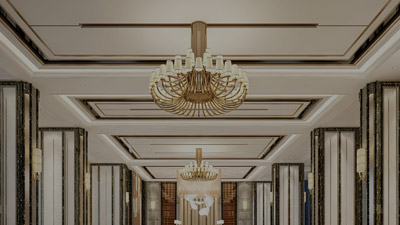
- Homeowners
- Professionals
- Products
- Back
- PlasterBoards
- Metal Framing & Accessories
- Jointing and Finishing
- Gypsum Plasters
- Ceiling Tiles
By material Type
By Category
- Resources
- About
- Careers
- FAQ's

Date: 25 August 2020
Sudeep Kolte, VP, sales & marketing, Saint Gobain India – Gyproc business, tells it as it is
How has the Covid-19 pandemic impacted the construction/manufacturing industry and what are the emerging trends that will become the norms from here on?
The pandemic has struck at a time when the economy was already at a sensitive turn. According to an RBI survey, the aviation, automobiles, construction, MSME, and tourism & hospitality sectors are likely to be hit the hardest by the pandemic, with effects persisting until the next 3-5 years. The impact of this goes further to affect investments in capital markets and real estate, and on the ongoing household saving pattern. Overall, the industry will not just be managing project completion timelines, but also sudden infrastructure requirements, public sentiments, labour constraints, logistical imbalances and working capital.
Given the circumstances, the infrastructure industry will hold a far stronger focus on strategic interventions that address the health and socio-economic impact of COVID-19. As far as the revival strategy for the construction and real estate industry is in question, the gradual unlocking of geographies and business is aiding a well-thought out resumption, while keeping in mind the staff and labour safety.
At the initial stage, the focus will obviously be on completion of existing and pending projects and not so much on creating new opportunities. However, the industry has also been gearing up to support urgent requirements with respect to healthcare facilities. According to industry experts, there is an urgent need to ramp up healthcare infrastructure and hence modern, lightweight construction technologies will be required to be deployed. Drywalls perfectly fit the bill as they are lightweight yet robust, faster to construct, require less labour and environment friendly on account of minimal water consumption.
In addition, while the pandemic shapes current functions, the trends that will influence the industry in the long-run would include developers aggressively investing in building seamless end –to –end digital experiences for the potential customers, employees and channel partners. Besides this, old trends like affordable residential housing will considerably gain traction in the initial stages as people get anxious about owning a safe abode, post the COVID -19 lockdown. There will be a dire need for co-operative and flexible spaces that support a greener and sustainable way of living along with being accommodative. Overall, the industry will see a shift change in how infrastructure is relooked at- right from city planning to individual projects.
What is your outlook for this sector? What, according to you, are the challenges being faced by the industry and where does it currently stand in addressing those?
The infrastructure sector was already toiling challenges like project delays, regulatory changes and plummeted sales for the last few years. According to the industry experts, Indian companies across the sector are facing a severe shortage of workers and the unavailability of raw material. This is largely due to the transport restrictions imposed selectively by states, further making it difficult to adhere to the timelines of completion. With current limitations around migrant labour, project delays, funding and sales, and a cost inflation of 5 to 10% the situation is undoubtedly only bound to get more difficult.
For an industry heavily dependent on migrant labour, it is going to be a mammoth task bringing the force back in action and kick starting the projects. The larger issue also being that most of these laborers retreated to their hometowns too seek safe haven in this time of crisis. The task at hand here is not going to be limited to getting the work started. Added emphasis on labour safety with respect to health and infrastructure will also take higher precedence, adding further pressure on the industry. Because this will mean working with a comparatively low number of workers at a single time, adhering to social distancing guidelines and investments in insuring staff health.
It is also important to mention that the revival of construction industry is contingent upon the availability of funds. I understand that the balance sheets of many players in the real estate sector are quite stretched. A strong injection of fresh working capital will be required to kick-start the activity.
We, at Gyproc India, are addressing the revival one-step at a time. The permissions to resume manufacturing services within set constraints received at the initial stage enabled the business to plan a comeback and route-to-market strategically. We are already picking pace on project delivery in various sectors, especially healthcare, offices, warehouse, etc. that need immediate support.
Lastly, the increased dependency on tier 1 markets has also been limiting growth. Over the decades, metro cities in India have been flooding with new residents. This influx has led to increasing shortages in civic facilities, decline in overall living conditions and mounting land prices. This dependency has also had a serious crippling effect on the sector, thereby nudging the shift in focus to non-metro markets.
With this scenario in mind, Saint-Gobain Gyproc has successfully made inroads in identifying opportunities within the tier 2, 3 & 4 markets and the fact that more than 60% of our business come from these markets has helped us recover at a faster pace This penetration also allowed us to imagine and create successful sustainable models that preempt situations like pandemic and climate impact, aiding future-ready infrastructure.
Do you think sustainable design and construction is a viable solution to tackling global problems like need for public safety and climate change?
The influence of mankind has been massive on the world’s ecology. Due to rapid urbanization, we need to find solutions that will help improve quality of life, build infrastructure that is flexible and most importantly- sustainable. The construction and infrastructure industry is highly capable to encourage the advancement of sustainable development that address issues like public safety, climate change and hygiene. The switch to a sustainable tomorrow can reduce overall energy use, and maximize the potential of renewable resources while minimizing all types of pollution. If opted by Indian companies, this change can not only save the environment but also reduce the total costs of ownership.
An example that can help set good context here is our recent collaboration with the Government of Gujarat to lead an initiative converting an existing hospital premise in Surat into a Covid-19 facility. Gyproc led the effort providing sustainable designs and solutions that helped optimize an area of 52000 sq. ft., allowing space for more wards, sanitation areas, pantry and essentials zones, with each area offering adequate space for every patient. Right from design support, material movement, installation sequence, workforce planning, on-site supervision and coordination with other agencies, the project was completed well within less than 2 weeks using sustainable gypsum technology. The successful model is now seeing adoption in more geographies.
At Gyproc, we not only focus on providing solutions that are sustainable and eco-friendly, but also on fulfilling the aspiration attached with space, be it personal or professional. Our portfolio includes a wide range of gypsum based products which are recyclable and are easy to configure. We ensure that there is reduced use of natural resources, making it a lightweight construction material. Furthermore, we seek to provide one-stop solution that does not just deliver and install the product, but also offers essential accessories to uphold it.
Where is Saint-Gobain Gyproc seeing growth in India? What is the roadmap for the company for the next 6 -12 months?
In the short to mid-term we are anticipating good traction from healthcare sector as in India hospital infrastructure is not adequate to cater to a population of 1.3 bn. With e-commerce proliferating there will be a spike in the Warehousing space and lot of such infrastructure will come up in T2/T3 markets closer to the customer base. India is also aiming to be a manufacturing leader and hence we anticipate good traction from the industrial sector. Our key sectors like office will surely revive in the next two quarters since the slump in global economy will result in outsourcing to India thereby driving up office space demand. Residential is the biggest opportunity and will take some time to recover as sentiment at both customer and developer level is low. However, work from home has created a unique opportunity with customers considering bigger homes and exploring dedicated work spaces with privacy wherein our solutions can play a big role.
In the next 6 to 12 months we will keep investing in category creation as penetration of gypsum based materials in construction is still low in a country like India. Our constant endeavor is to listen to our customers, understand their needs and come up with meaningful solutions – our next-gen plasterboards are tailored to address varied customer needs like acoustics, loading, impact, cladding and aesthetics.
Our R&D center Saint Gobain Research in Chennai is working on a lot of interesting innovations ideal for a hot and humid climate. We are also increasing our manufacturing footprint in plasters with a plant in Chennai. Our new ceiling tiles plant in Jhagadia will manufacture a wide range of PVC laminated and perforated tiles.
As a market leader we constantly strive to grow the market through our marketing and brand communications, leverage digital to reach our customer base and deliver a seamless experience while simultaneously increasing our distribution footprint.